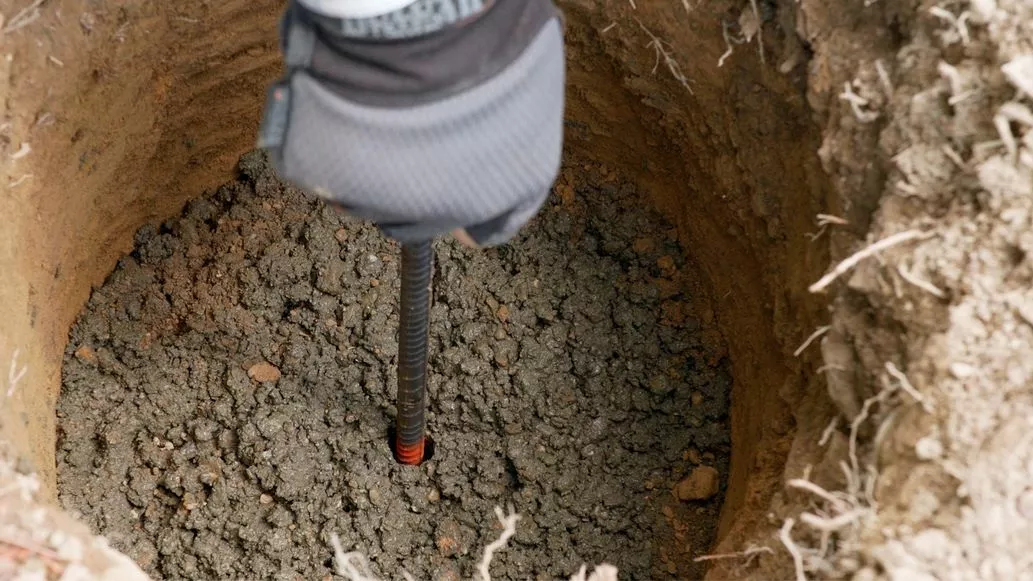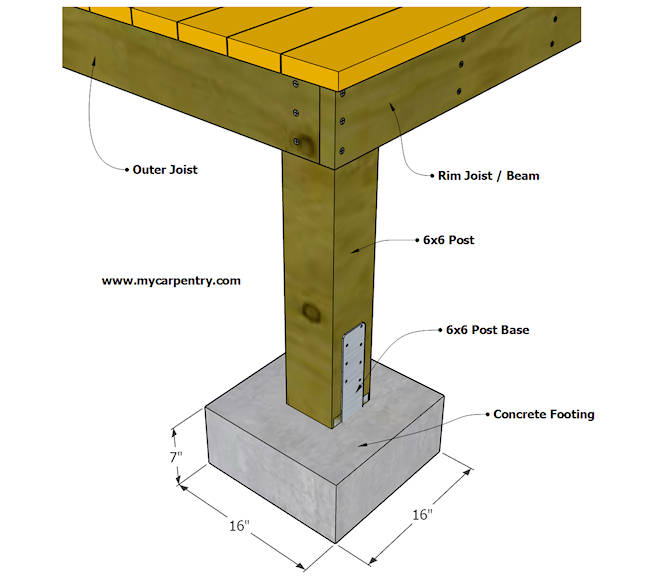Make Certain Stability and Long Life With Correctly Mounted Deck Footings
Deck grounds may not be one of the most attractive aspect of deck building, yet they play a crucial role in making certain stability and long life. Correctly mounted footings offer a solid structure for your deck, avoiding typical issues like drooping, moving, and even collapse. Selecting the best kind of ground and correctly installing it can be an intricate process. In this discussion, we will certainly explore the importance of appropriate deck grounds, elements to take into consideration throughout installation, different kinds of grounds offered, step-by-step setup overview, and maintenance pointers for making certain lasting grounds. If you want to make certain the security and long life of your deck, maintain reviewing to uncover the key insights to achieve a structurally sound and durable exterior room.

Importance of Correct Deck Footings
Why are properly set up deck grounds essential for the security and longevity of your deck? Deck footings are the foundation on which the deck relaxes, moving the load from the deck to the ground.
First of all, effectively installed deck footings disperse the weight of the deck evenly, stopping any kind of irregular settling or sinking. This is specifically essential in locations with unsteady dirt, as it helps to alleviate the risk of the deck collapsing or moving. Furthermore, well-installed footings make sure that the deck remains degree, preventing any type of structural damages that can take place when a deck becomes unequal.
Second of all, properly mounted footings supply a strong support for the deck, stopping too much activity and guide. This helps to maintain the structural integrity of the deck, decreasing the risk of injuries or mishaps. It likewise decreases the damage on the deck, permitting it to stand up to the aspects and routine usage for a longer time period.
Aspects to Think About for Deck Footing Installment
When setting up deck grounds, there are numerous essential aspects to think about for correct setup. These variables can considerably impact the security and long life of your deck. Firstly, you require to identify the type of dirt on which the deck will be developed. Various soil types have various load-bearing capabilities, so it is crucial to carry out a dirt test to make sure the grounds can support the weight of the deck and its passengers. Additionally, the place and format of the deck ought to be meticulously planned to prevent any kind of obstacles such as trees, energy lines, or below ground pipes. It is also crucial to consider the regional environment and weather condition conditions, as these can influence the toughness of the grounds. For instance, areas with a high water table might call for extra actions to stop water damages. The size and product of the grounds need to be picked based on the dimension and weight of the deck, as well as the neighborhood structure codes and laws. By taking into consideration these factors, you can guarantee the proper installation of deck footings and delight in a lasting and steady deck.
Sorts Of Deck Grounds to Pick From
There are numerous various kinds of deck footings readily available for you to select from. Each type has its own advantages and drawbacks, so it's vital to consider your particular needs and the problems of your deck prior to choosing.
One usual sort of deck ground is the concrete ground. This includes digging holes in the ground and pouring concrete into them to create a solid foundation. Concrete grounds are sturdy and give superb security, making them ideal for decks in locations with difficult soil conditions or high wind tons.
Another option is the helical pier footing, which includes a steel shaft with helical plates that are screwed right into the ground. These grounds are fast to set up and can be used in various soil kinds, including sandy or clay soils. They are also flexible, enabling for easy leveling of the deck.
Sonotube grounds are an additional prominent choice. These grounds are produced by positioning a cardboard tube in an opening and filling it with concrete. Sonotube grounds are fairly very easy to set up and provide ample stability for article source smaller sized decks or in locations with less requiring soil problems.

When choosing the type of deck footing, it's essential to think about aspects such as dirt problems, deck size and weight, regional building ordinance, and personal preferences. By choosing the suitable footing type, you can make sure the stability and durability of your deck.
Step-by-Step Overview for Setting Up Deck Footings

Figure out the place: Begin by noting the exact setting of each ground using risks and string (Deck Footings). Consider any type of neighborhood building ordinance content or guidelines regarding obstacle ranges
Dig the holes: Utilize a blog post hole digger or an auger to dig the openings for the grounds. The depth will depend upon the frost line in your location and the type of dirt. Typically, a depth of a minimum of 36 inches is suggested for security.
Level the holes: Make sure that all-time lows of the openings are degree (Deck Footings). This can be attained by using a level or a straight board across the top of the holes
Add crushed rock: Area a layer of crushed rock at the end of each hole to improve drain and stop the ground from sinking right into the dirt over time.
Insert the footing types: Place the footing forms right into the openings, ensuring they are centered and degree. Use stakes to protect them in location.
Mix and put concrete: Comply with the guidelines on the concrete mix bag to prepare the concrete. Pour the concrete into the ground kinds, filling them totally.
Smooth the surface area: Make use of a trowel to smooth the surface area of the concrete and remove any air pockets. Enable the concrete to treat according to the supplier's instructions.
Maintenance Tips for Durable Deck Grounds
Proper maintenance is critical for making certain the longevity and stability of deck footings. By on a regular basis inspecting and preserving your deck grounds, you can stop damages and prospective security dangers. One vital facet of upkeep is to on a regular basis look for any signs of wear and tear, such as cracks or movement in the grounds. If you observe any type of problems, it is essential to address them promptly to avoid more damage.
Routine cleansing is additionally crucial for maintaining deck grounds. Plant life, debris, and dirt can collect around the grounds, which can lead to moisture accumulation and degeneration. Cleansing the footings on a regular basis, using a brush or a pressure washing machine, can aid avoid these problems and expand the life-span of your deck.
In addition to cleaning, it is necessary official statement to maintain the location around the grounds free from any obstructions. Prevent stacking products versus the grounds or permitting plants to expand also close to them. These obstructions can trap moisture and trigger the footings to wear away with time.
Lastly, regular resealing of the footings is recommended to safeguard them from wetness and various other ecological factors. Using a waterproof sealant can assist stop water damages and expand the lifespan of the footings.
Conclusion
Finally, appropriate setup of deck grounds is crucial for guaranteeing security and long life of your deck. Factors such as soil type, tons capability, and neighborhood building ordinance need to be considered when selecting the ideal kind of deck grounds. Adhering to a detailed overview for setup and routine maintenance will certainly aid to make certain the grounds stay resilient and lasting.
In this conversation, we will explore the importance of correct deck footings, factors to consider throughout setup, different kinds of footings available, detailed setup guide, and maintenance pointers for making sure lasting grounds. Deck grounds are the foundation on which the deck relaxes, transferring the load from the deck to the ground.One usual type of deck ground is the concrete footing. Place the ground forms: Put the footing forms right into the holes, ensuring they are focused and degree.In conclusion, proper setup of deck footings is crucial for making sure stability and long life of your deck.